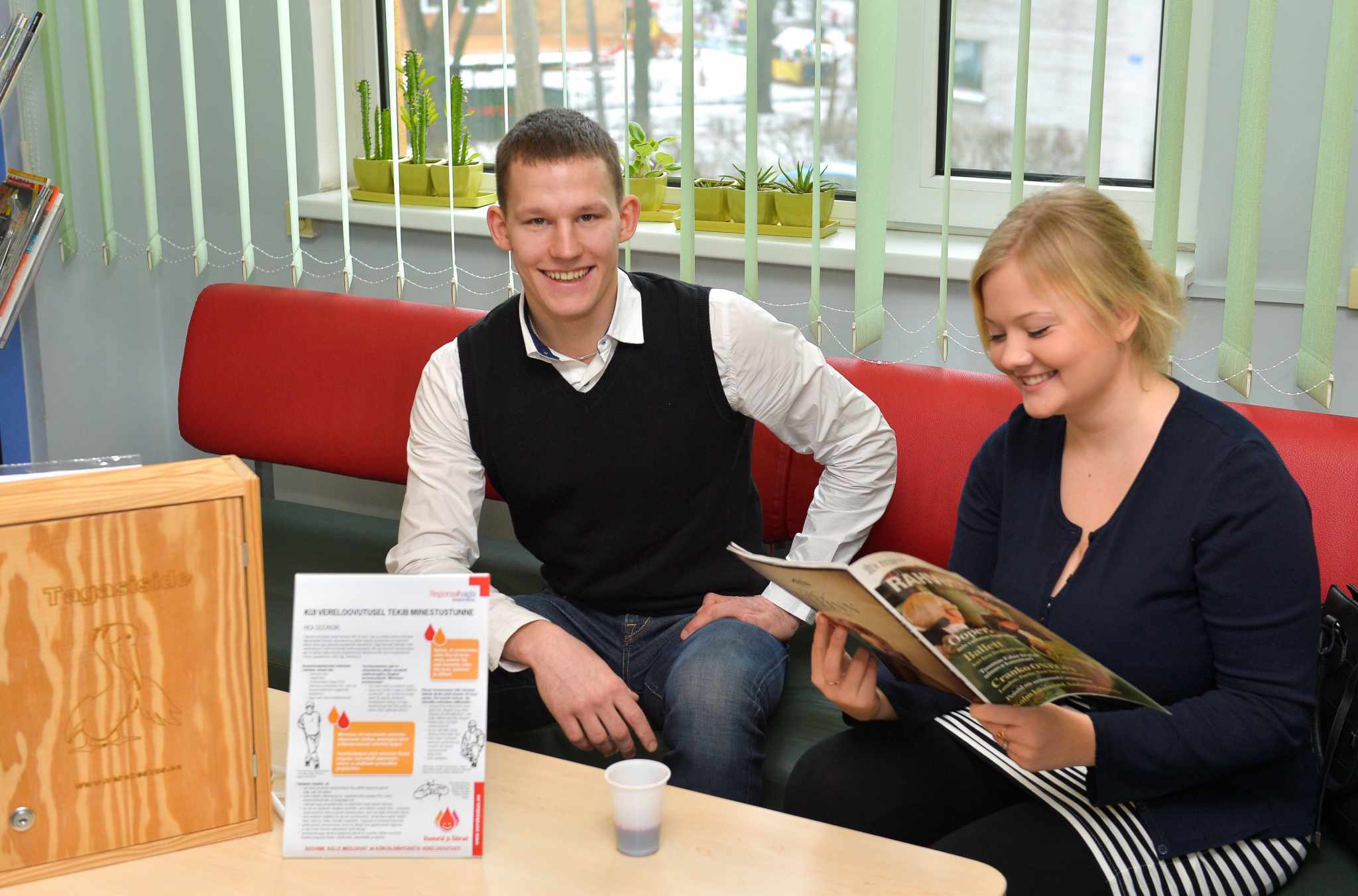The Donation Process
Registration and form
At the Blood Centre, prospective donors first go through the registration desk, where they present photo ID (ID card, passport, driver’s licences).
Then the donor is shown to a computer where, regardless of how many times in the past they have given blood, they fill out a form on their health and lifestyles. It is very important to give an honest answer to all of the questions. If there is any uncertainty in answering the questions, medical staff can be asked in the next stage – the medical exam – and the answers filled out at that point.
The questionnaire is an important document for evaluating the suitability of the donor, as giving blood has to be safe for both the donor and the transfusion recipient. The final decision on whether the person is a suitable donor is made by a medical worker at the Blood Centre in the course of the brief chat and medical exam.
Medical check
At the mini-exam, a doctor or nurse talks to the donor and checks haemoglobin levels, blood pressure and pulse rate. In the case of first-time donors, blood group is also determined in the ABO system. The exam will determine whether the person can give blood that day. All donors have to go through this stage each time.
A person who wants to be a donor definitely has to tell staff of any concerns related to health, about medicines they have taken recently, diseases they have had, and other details that may be important from the standpoint of guaranteeing safety of the blood supply. All personal data and medical information are confidential and will not be disclosed to third parties.
Blood Centre medical staff have the right to refuse the person give blood if the donor doesn’t answer any of the questions – either the ones on the form or additional questions from the medical staff. Naturally, questions are also welcomed from the donor.
The normal haemoglobin range to be eligible to give blood:
- 125-165g/l for women
- 135-180g/l for men
Normal blood pressure and pulse rate range:
- blood pressure 100/60-180/100 mmHg
- pulse 50-100 bpm
After the medical exam, the donor signs his or her name to certify that the data are correct, that his or her blood is safe for use in transfusions and that he or she has received sufficient information on the safety of the donor blood and gives consent to give blood.
You should be aware that you can reconsider your plan to donate blood at any stage in the process; including disallowing already donated blood from being used.
Giving blood
Right before giving blood, drink a few glasses of juice or water – this will ensure you feel well after giving blood.
The procedure itself is painless, takes place in a semi-reclining position and takes five to ten minutes. During the procedure, 450 ml of blood is drawn from the donor; this is only 7-13% of the amount of blood in an adult’s body.
Plasma usually returns to the normal level within 24 hours, and the number of blood cells is replenished in three weeks. During each donation, about 25 ml of blood is also drawn from the donor’s body for testing.
You should be aware that you have no risk of contracting a virus disease, as we only use only disposable, sterile supplies.
After blood is drawn, leave the elastic bandage over the needle insertion site for at least four hours.
Recovery period
Remain lying down for a few minutes after giving blood and don’t try to get up too fast. Take about 10-15 minutes in the resting room. drink juice, tea or coffee and cookies. Don’t be in a rush to leave. If you feel weak, take a little longer.
On the rest of the day and the next day, drink more fluids than you ordinarily would and avoid strenuous exertion, including swimming or saunas.
Uncommon side effects:
- weakness, nausea or loss of consciousness (usually short in duration and harmless to the donor’s health)
- very rarely, there may be a haematoma in the injection site
- in unusual cases, the needle may impact a nerve near the vein.
If side effects emerge, contact the Blood Centre personnel or the nearest medical facility.
To keep the possibility of side effects to a minimum, follow the advice given by the Blood Centre.
Contacting the Blood Centre after giving blood
If you find out later that your blood may pose risks, call the Blood Centre immediately. Do this even if you are diagnosed with a blood-borne infectious disease 12 months after you gave blood. The Blood Centre needs this information to ensure safety of the blood supply and patients’ health.



